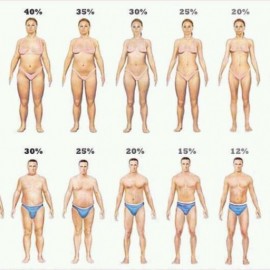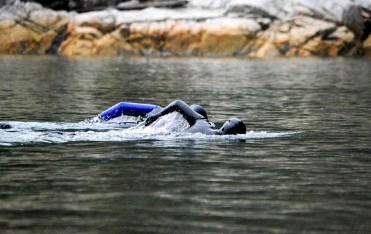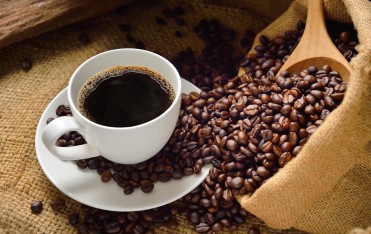Typical healthy body fat content for women is 18%-25% compared to 10%-15% for men. Women typically store fat in their thighs, hips, and limbs as peripheral fat, and beneath the skin – subcutaneous fat. Men tend to store more body fat in the upper body and within the body cavity – visceral or intra-abdominal fat. The reasons for this disparity are as follows:
Genetics – for reproductive reasons women have a higher lower percentage of bodyfat and lower proportion of muscle than men.
Hormones – women convert and retain more fat due to having higher levels of oestrogen, a reproductive hormone, which alone, causes increased deposition of fat. Women also have lower levels (20-30 times) of testosterone than men which leads to higher proportion of body fat relative to muscle.
The contraceptive pill causes the body to produce increased amounts of fat and water and women using the pill, particularly those prone to fat-gain, should decrease caloric intake by at least 10% in order to maintain the same weight.
Metabolic rate is linked to muscle mass and because women naturally have less muscle mass than men of equal size, they typically have lower basal metabolic rates (BMR) and therefore are predisposed to store more fat.
Like for like, in terms of age and activity levels, a woman requires fewer calories per kilo of bodyweight daily than a man, so any excess calorie intake risks being stored as fat.
Muscle Gains – many women steer away from weight training into their exercise routine, for fear of bulking up, but even light weight training builds muscles mass (not bulk) which increases metabolic rate.
Tips for weight/fat loss:
A. Exercise – start any weight/fat loss programme with moderate intensity cardio and light weights. This is realistic and tangible, can be done anywhere, and ensures the body is not placed under undue stress particularly when carrying additional weight. Begin training at about 70% maximum heart rate (MHR) for 30mins, five days per week, and increase both intensity and duration up to 60mins (you can reduce frequency as duration increases if you choose). Weight training is essential for fat loss, because when you build muscle, you increase metabolic rate. The more muscle you’re holding, the better your chances of losing body fat. As you progress, incorporate High Intensity Interval Training (HIIT) an advanced and demanding form of cardio that strips body fat at a faster rate.
B. Nutrition – eat good fats such as the omega-3 and omega-6 fatty acids found in wild salmon and polyunsaturated oils etc. – these will have a fat-burning effect, as they enhance metabolic function. Complex carbohydrates such as in brown rice and whole oats, eaten during the day and avoided in the evening, will maximise fat-burning because they stimulate metabolism without causing the over-stimulating insulin production, which causes greater fat storage. Fibre found in high-wheat foods and certain fruits and vegetables, is important for fat loss because it increases feelings of fullness and pushes fat through the system to be eliminated. Fasting, such as the 5:2 diet works well for many, but fasting too much can stress the adrenal glands and cause your hormones to rebel so be careful.
C. Water – daily recommended fluid intake is 2 litres – most weight-loss success stories indicate a higher (around twice as much) than normal water intake as water is crucial for fat loss, because it helps the liver perform the function of fat conversion for energy purposes.



